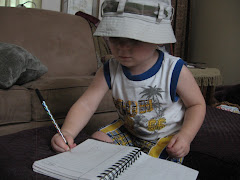1. BIBLIOGRAPHY
Aston, Dianna Hutts. THE MOON OVER STAR. Illustrated by Jerry Pinkney. New York: Dial Books for Young Readers, 2008. ISBN 9780803731073.
2. PLOT SUMMARY
On July 20, 1969, Mae and her family live in the town of Star, and like most of the rest of the world, they are watching the sky as Commander Neil Armstrong and his team land on the moon. The town prays for the safety of the men at church that Sunday morning, Mae and her cousins build their own spaceship at the family picnic that afternoon, and Mae and her gramps talk about the possibility of Mae going to the moon that evening. As the family sits under the stars looking at the moon where three Americans now fulfill John Kennedy’s dream, Mae learns to dream as well.
3. CRITICAL ANALYSIS
Aston’s text tells the story of an eight-year-old girl’s dream to go to the moon in a way that inspires readers to think about dreams. Using the Apollo 11 landing on the moon in 1969 as the backdrop, Aston tells of Mae’s dream through both her thoughts and her interaction with her grandfather. Gramps is proud of Mae, and encourages her. “Keep on dreaming, Mae,” he said. While the story is realistic and can help young readers feel what it was like to know three men stood on the moon that day, Mae’s thoughts and interaction with her family make her seem much more than eight, especially when she answers her cousins questions about the event using information she had read in the newspaper, when she wonders about her gramps’s dreams, and when she realizes that her gramps is “lifetime-tired.”
The format of the text is poetic in appearance; every line begins with a capital letter and the returns at the ends of the lines often create short lines. The returns feel random, though, and the capital letters at each line feel a little confusing, not seeming to contribute to the flow or telling of the story. However, facts from the historical event are woven seamlessly into Mae’s dream of becoming an astronaut.
The family is portrayed as a typical, middle-class family watching an event along with millions of other people around the world. Except for Mae’s name – perhaps in reference to Mae Jemison, the first African American female astronaut who was 12 when Apollo 11 landed on the moon – the story does not have any other references to African American culture. But as is often the case in African American literature, the family is a loving, extended family who worships together, fellowships together throughout the day, and finally sits in front of the television to hear Walter Cronkite announce “Man on the moon!” followed by Armstrong’s now famous statement, “The Eagle has landed.”
Jerry Pinkney’s graphite, ink, and watercolor artwork portray the earth and the moon in magical ways, and his paintings of the astronauts and the launch of the rocket make it easy to see why Pinkney was one of the official NASA-sponsored artists to commemorate the Shuttle Columbia launch in 1982. His portrayal of Mae’s family and her grandparents’ farm is warm and welcoming. The closeness of the family is evident in their facial expressions and gestures, as well as their coming together to share the day of this important event. Intragroup color differences are also evident. In the paintings of the children, the reader can almost hear them when they carry the heavy watermelon and when they imagine they are on a rocket hurtling into space as they play during the afternoon. Pinkney was one of the 2009 Coretta Scott King Honor recipients for his illustrations in The Moon Over Star, and the illustrations are definitely the strength of this picture book.
4. REVIEW EXCERPT
*Publishers Weekly: “In some of his finest watercolors to date, Pinkney supplies both his characteristically affectionate, realistic portrayals of African-American families and lyrical views of the moon, giving visual form to what Aston evokes: awe.”
*School Library Journal: “Pinkney's remarkable graphite, ink, and watercolor paintings evoke both the vastness of space and the intimacy of 1960s family life. Writing in the voice of a nine-year-old African-American girl, Aston is lyrical and sometimes evocative, though some of her narrative choices are overworked.”
*Booklist: “Spaced vertically in phrases like free verse alongside the large illustrations, the text combines dignity and immediacy in a clean, spare telling of events. Pinkney's evocative artwork, created using graphite, ink, and watercolor, depicts a black family captivated, and perhaps subtly changed, by the moon landing in 1969. A quiet, satisfying tribute to this milestone in human history and its power to inspire others.”
5. CONNECTIONS
• Follow up Aston’s story with Buzz Aldrin’s Look to the Stars, a picture book account of his Apollo 11 trip to the moon. Mae wondered what the astronauts could see from the moon. What can we learn from the account of one of those men who were there?
• Pair this fictional account of Mae’s experience of the Apollo 11 landing with the true account of the “Mercury 13 Women,” women who fought for their place in the male-dominated world of the astronaut. Almost Astronauts: 13 Women Who Dared to Dream by Tanya Lee Stone will demonstrate the difficulty of an “Other” group’s struggle to break into the world of the white male.
• Students can compare their dreams to Mae’s dream of being an astronaut. What are their dreams? What have they seen or experienced that inspires their dreams? Students may write their own stories incorporating facts from a historical event into their personal story.
• The Space Child’s Mother Goose is a funny book of poetry for older readers about space that would go nicely with Aston’s book. Students can select poems to share with each other in read-alouds or select pieces for their own illustrations.
GUEST POST: Chris Baron on SPARK
8 months ago



No comments:
Post a Comment